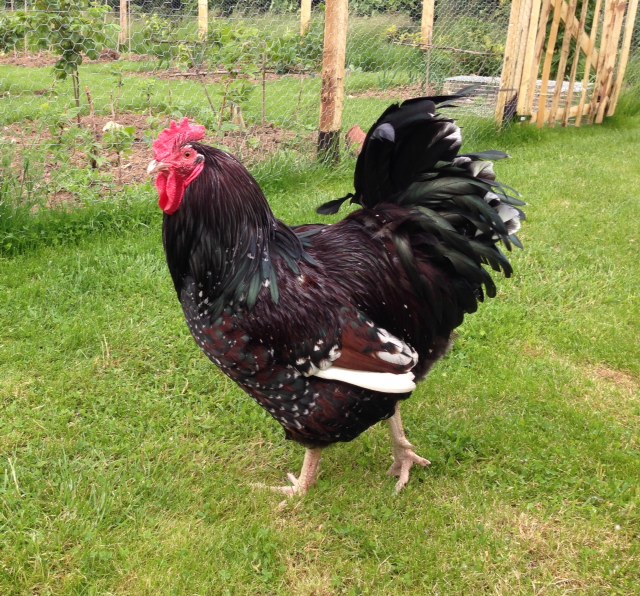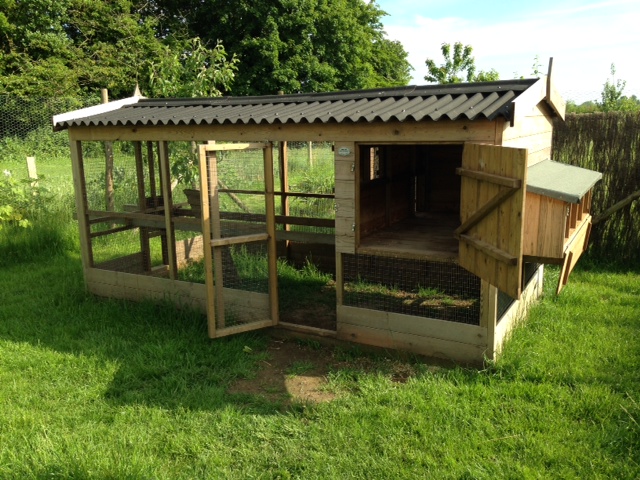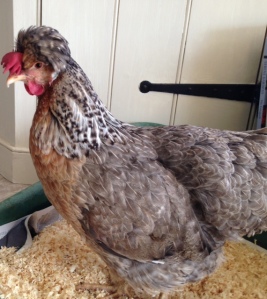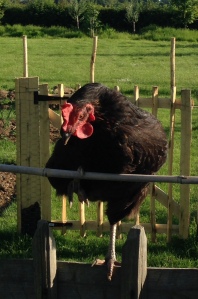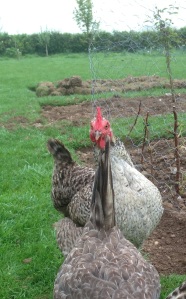Just as I was beginning to feel life was hardly worth living without hens, Kind Neighbour dropped round with a couple of names of people who sell Sussex breeds. One has Sussex hybrids, he said, but the other, in nearby Otterden, has purebreds. “Hybrids are all very well,” he added. “But really, why not think about purebreds? And maybe a cockerel – then you could start raising your own chicks.”
Ten minutes later I was on the phone to Otterden Lady. “Yes, I have plenty of brown Sussex, some light Sussex – my buff Sussex hens aren’t for sale, but I do have some Dorkings,” she said. “Irresistible,” I replied. Not so much the Dorkings (an ancient, rare and slightly lumpy looking breed, said to have been brought over by the Romans – mainly for meat rather than eggs), but the brown and red Sussex – yes, please.
“And what about a cockerel? Would you like a speckled Sussex boy?” Otterden Lady asked. “I haven’t seriously considered a cockerel; on balance, No,” I replied.
Next morning I navigated the lanes off the A251 to Otterden, an indeterminate place between Stalisfield and Charing. I was after hens. A cockerel? Noisy, aggressive, they don’t lay eggs, they eat a lot, so the wisdom goes. Who’d bother? And I don’t have time nor the expertise to raise chicks. Definitely not.
Otterden Lady was a revelation. An hour later I had chosen five brown Sussex hens… and the speckled cockerel, a fine young man – a year old – with white tipped feathers and green-black feathers. “He’s a lovely boy,” OL said, scooping him up. She stroked his wattles beneath his chin. “You can put a cockerel to sleep by gently pulling the wattles,” she said.
I was transfixed. He seemed friendly, almost docile. He lived in a large pen separate from the brown Sussex hens, but she said that there wouldn’t be a problem mixing him with the hens. Were they vaccinated? “No, you don’t need to vaccinate Sussex hens,” OL said. She advised taking them to the vet and antibiotics if a problem arose. And were their wings clipped? “Oh, no, Sussex hens can’t fly,” she said (at exactly that moment a feisty brown hen flew from one pen into another, and attacked with terrifying ferocity another hen. They can fly when they really, really want to… and hens can be shockingly aggressive).
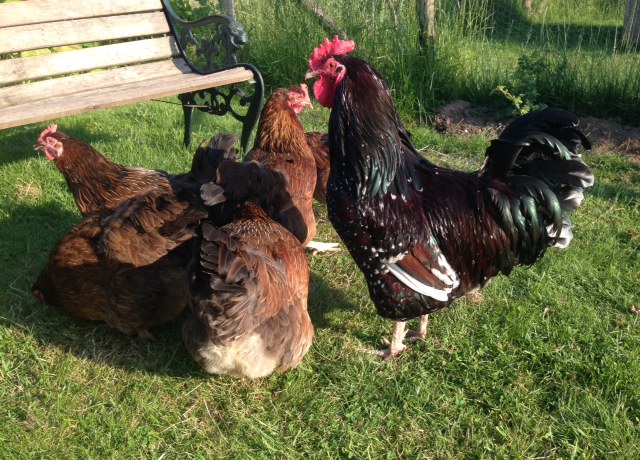
Protective: Elijah the cockerel watches over his hens while they eat. He will wait until he thinks they’ve had enough before he tucks in
I helped catch the hens – not easy, even experts can be made to look complete arses chasing flapping squawking birds – packed them into cardboard boxes, and 20 minutes later arrived home. I noticed a few lice on a couple of them, so doused each with Livestock Louse Powder, and set them into the pen, with the main door closed while they settled in.
Elijah seemed the best name for a rather exotic looking creature. I’d like to call the hens Billy, Chrissie, Jean, Amelie and Mauresmo (in time for Wimbledon) but I can’t tell one from the other, so for now it is Elijah-and-the-hens.
For the first couple of days, even after I opened the door of the main pen, Elijah kept the hens inside. When one of them wandered outside, he’d follow her and guide her back. He also made a dust bath for them, scratched around in the egg-laying nests to tempt them to lay eggs… and of course “treads” them, poultry-speak for mounting them, a tricky process that is not for the faint-hearted. More of that in my next blog.
Meanwhile, they are settling in nicely, and now laying two to three eggs a day.
MORE ON KEEPING A COCKEREL
Rurallivingtoday.com great forum, which includes tales of people who have kept ‘nasty SOBs’.
Backyardchickens.com always comes near the top of a google search for almost any hen-related issue. Some of the threads are more than a couple of years old but still relevant.
Poultrykeeper.com what it says on the tin: very lively debate between the pro and anti cockerel contingents.
